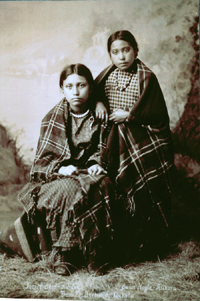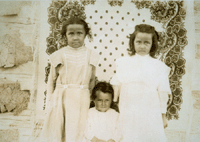Control of the Fur Trade
Fur Trade Economy
Report on the Fur Trade, 1831
Smallpox Epidemic, 1837
Children of the Fur Trade
| | |
Children of the Fur Trade
Because Indian women enjoyed an independent status in their communities and because tribes benefited from the creation of new family relationships with outsiders, sexual relations with European fur traders had long been a familiar feature of Native life. As the number of American and Canadian fur traders multiplied in the nineteenth-century West, the population of mixed-heritage children grew apace. Accepted in their home communities, these children were often scorned as “half-breeds” by racially conscious whites. These photographs are from Fort Berthold, near the site of the Mandan villages.
Photographer Unknown. "Arikara Children: Susie Nagle and Mary Walker," Ft. Berthold Reservation, 1890.
W. M. Camp. “Children of Peter Beauchamp, mixed Arikara Indian, French and English,” taken on the Fort Berthold Reservation, 1912.
|

| Click to Enlarge | Newberry Library |

| Click to Enlarge | Newberry Library |
|

